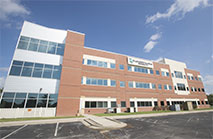Vascular Series Part 2 – What Is CT Angiography (CTA)?
 CT angiography, or computed tomography angiography, (now you see why we like to call it CT angiography- such a mouthful!) is a way of imaging the blood vessels and surrounding tissues.
CT angiography, or computed tomography angiography, (now you see why we like to call it CT angiography- such a mouthful!) is a way of imaging the blood vessels and surrounding tissues.
Why would we do that? CT angiography is a noninvasive way to exquisitely evaluate blood vessels within the body. With a simple venous injection of contrast we can quickly and elaborately evaluate the artery, the wall of the artery and the surrounding tissues.
Let’s look at an example. Say we need to evaluate patients with suspected narrowing in the neck arteries – CT angiography may follow an abnormal carotid Doppler to confirm how narrow the vessel is and to see if surgery will be necessary. It will show calcifications and noncalcified plaques and show how they affect the lumen (inside of the vessel) of the artery. This test is helpful in planning any necessary surgeries.
CT angiography can also be used to look at the arteries in the head for patients with strokes from bleeds. Aneurysms (focal outpouchings) and their relation to the vessel are well seen and this procedure can help plan interventions needed to address them.
So now we know why we need to perform CT angiography, it begs the question, why is this modality of imaging the best choice for a situation? In the past, catheter angiography was the traditional way of imaging blood vessels of all types. However, it involves putting a catheter through the skin into vessels, usually with an approach through the groin or in the arm. This creates beautiful images of the insides of the vessels, but is associated with some risks related to the catheter and the arterial puncture.
CT allows us to get exquisite images of the vessels with an injection into a vein in a less risky fashion while also allowing us to see the blood vessel wall – not just the lumen as is seen in traditional angiography. CT angiography can be used to evaluate blood vessels from the head to the toes and most parts in between. In some cases, CT angiography has replaced or nearly replaced the need for catheter angiography (CT angiography chest to evaluate for pulmonary emboli or blood clots in the vessels in the lungs is one example). Other times, CT angiography will identify those patients that will benefit from catheter angiography – often this is used when interventions like angioplasty (ballooning narrowed areas in the arteries) or stenting (putting in metal or mesh stents to open up narrowings) are needed.
All told, CT angiography may be a lot of syllables but it can save a lot of lives.
Originally published 6/11/14 on diagnosticimagingcenterskc.com.





